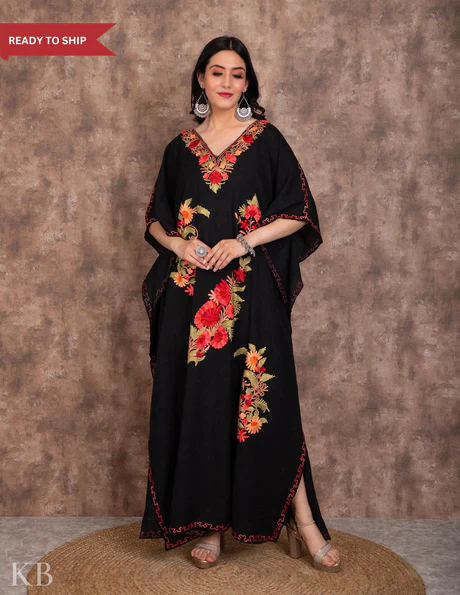Kaftan, a garment steeped in history and renowned for its comfort and versatility, has transcended cultural boundaries to become a global fashion staple. From its origins in ancient Mesopotamia to its evolution into a modern wardrobe essential, the kaftan embodies a seamless blend of tradition, style, and comfort. Let’s delve into the captivating world of kaftans, exploring their historical roots, diverse styles, contemporary adaptations, and enduring appeal.

A Heritage of Diversity:
The history of the kaftan spans diverse cultures and civilizations. Originating in ancient Mesopotamia, it found its way into various cultures across the Middle East, North Africa, Central Asia, and eventually the Western world. This loose, flowing garment became a symbol of cultural diversity and artistic expression.
Timeless Comfort and Versatility:
Kaftans, characterized by their loose, flowy silhouette and often adorned with intricate patterns or embellishments, exude an effortless elegance. Their loose fit allows for comfort in diverse climates, making them a versatile choice for casual wear, beach cover-ups, loungewear, or even as stylish evening attire.
Cultural Significance and Evolution:
Throughout history, kaftans have been associated with various cultural and social contexts. They were worn by nobility in Ottoman and Persian courts, signifying wealth and status. Over time, they evolved, adapting to different regions’ preferences, incorporating diverse fabrics, colors, and embellishments.
Styles and Variations:
Kaftans come in a myriad of styles, ranging from traditional, modest designs to modern, fashion-forward adaptations. Moroccan kaftans often feature vibrant colors and intricate embroidery, while Turkish kaftans boast luxurious fabrics and ornate details. Contemporary interpretations include shorter lengths, asymmetrical cuts, and experimental designs that cater to diverse fashion tastes.
Global Fashion Statement:
The versatility of kaftans has made them a global fashion statement. Embraced by fashion designers and influencers worldwide, kaftans have made appearances on runways, red carpets, and everyday street style. Their adaptability allows them to be styled in myriad ways, appealing to individuals seeking comfort without compromising on style.
Embracing Body Positivity and Inclusivity:
One of the key aspects of kaftans is their inclusivity in terms of size and shape. Their forgiving silhouette and relaxed fit cater to various body types, celebrating diversity and promoting body positivity. This inclusivity has contributed to their popularity among individuals seeking fashionable clothing with a comfortable fit.
Contemporary Fusion and Adaptation:
In the contemporary fashion scene, kaftans have undergone innovative transformations. They are now paired with accessories, belts, and footwear to create diverse looks suitable for various occasions. The fusion of traditional kaftan elements with modern designs and fabrics has elevated their appeal across generations.
Sustainable Fashion Choice:
Kaftans, with their timeless appeal and durable nature, also align with the principles of sustainable fashion. Their versatility and longevity make them a sustainable wardrobe choice, promoting conscious consumption and reducing the need for frequent replacements.
Embodying Freedom and Expression:
Beyond being a garment, the kaftan embodies a sense of freedom and self-expression. It represents an effortless style that transcends boundaries, allowing individuals to express their personality and cultural affinity through fashion.
The kaftan, with its rich history, cultural significance, and contemporary adaptations, remains a symbol of timeless elegance and comfort. Its journey from ancient civilizations to modern runways highlights its enduring appeal and adaptability. As we embrace the kaftan’s diversity and versatility, let’s celebrate its fusion of tradition and modernity, making it a cherished garment that continues to captivate fashion enthusiasts across the globe.
